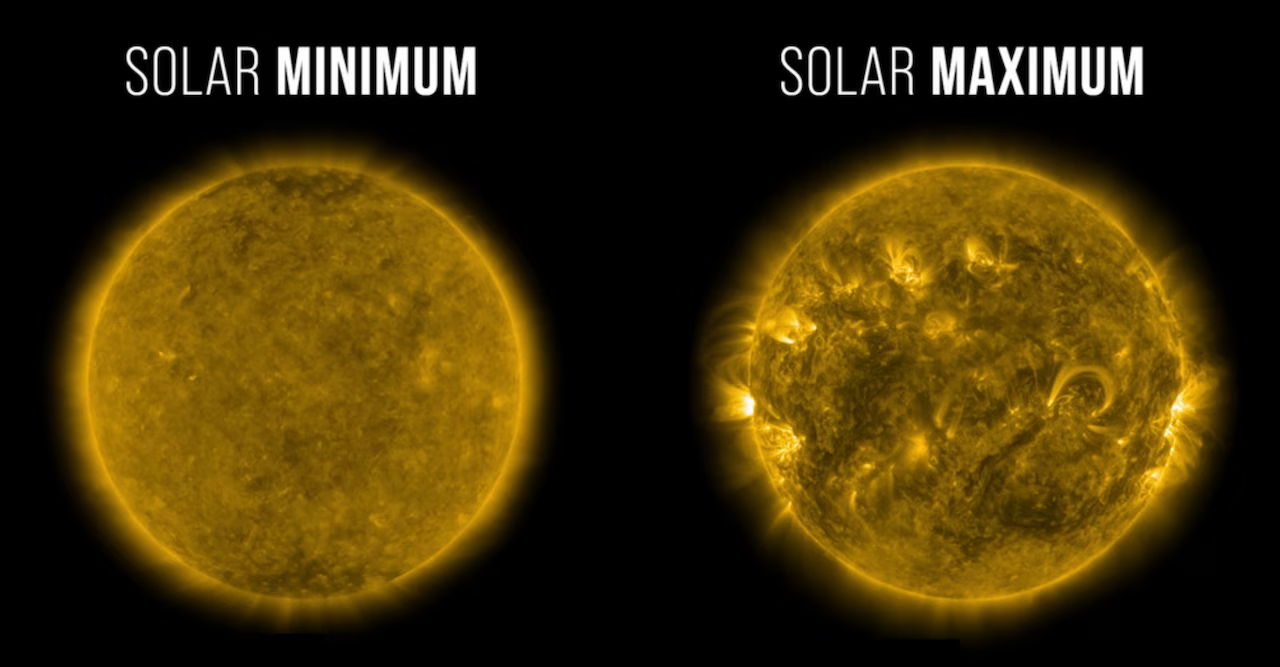
A comparison of Solar Minimum in 2019 (left) to the current Solar Maximum (Oct 2024) Credit: NASANASA
The agencies that track sunspot activity say we’re now in peak solar activity, which has a big impact on the amount and southward extent of the Northern Lights.
On Oct. 15, 2024 NOAA, NASA and the Solar Cycle Prediction Panel announced the Sun has reached its solar maximum period. Notice they call this a maximum “period,” meaning it’s not just a one-day event and then solar activity declines. The sun could stay at this most active level for several more months, and well into 2025.

On October 3, 2024, the Sun emitted a strong solar flare. As of this date, this solar flare is the largest of Solar Cycle 25 and is classified as an X9.0 flare. X-class denotes the most intense flares, while the number provides more information about its strength. (NASA/ Solar Dynamics Observatory)NASA
Sunspot activity has been ramping up over the past year with the prediction that maximum solar activity would occur around now. The forecast for the amount of sunspots fell far short of the current tally of sunspots.

Forecast of the number of sunspots (smooth red line) versus the actual number of sunspots (blue jagged line) shows actual sunspot numbers have overshot the forecast. (Source: NOAA’s Space Weather Prediction Center)NOAA
The solar cycle is an 11 year cycle, with the counting starting back in the mid-1700s. We are currently at the miaximum of solar cycle 25.

Solar cycles starting with cycle 1 to the current cycle 25. (Space Weather Prediction Center)NOAA
At the solar maximum, the amount of solar storms can be numerous. The Coronal Mass Ejections (CMEs) can be strong, resulting in strong solar storms. CMEs are the blobs of energy that shoot out of the Sun and eventually can result in a solar storm.
Northern Lights result from the Sun’s energy from these CMEs hitting Earth’s upper atmosphere. We’ve had several notable Northern Lights events in the past six months. We could have more during this peak time.
By the middle of 2025, the chances for the Northern Lights will be going down. This doesn’t mean we won’t have them for another 11 years, but the chances of strong solar storms will be lower.



